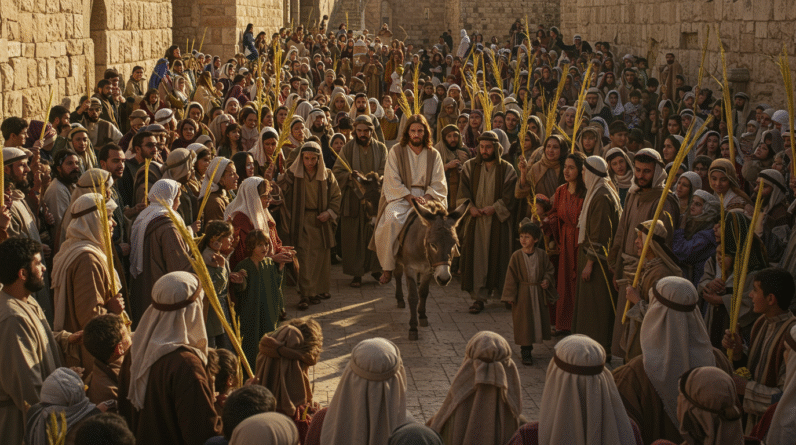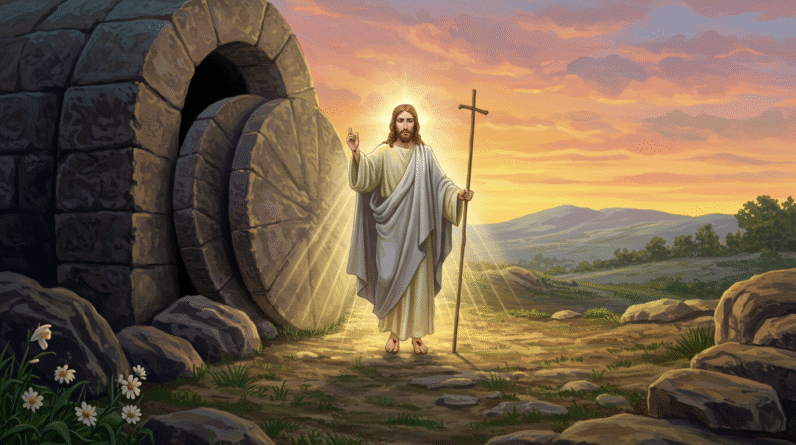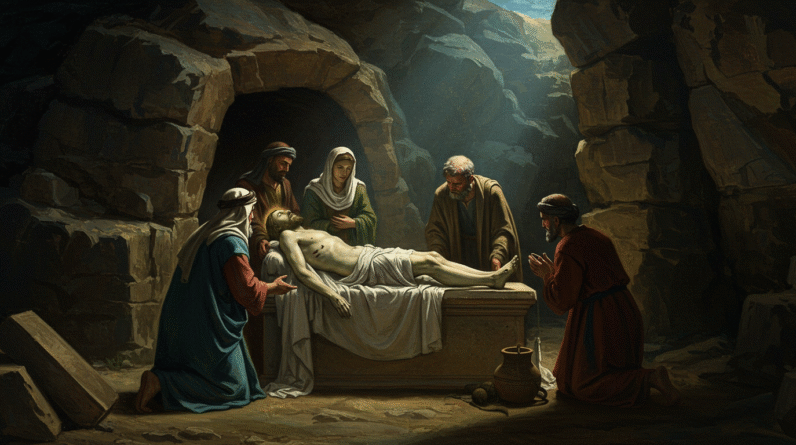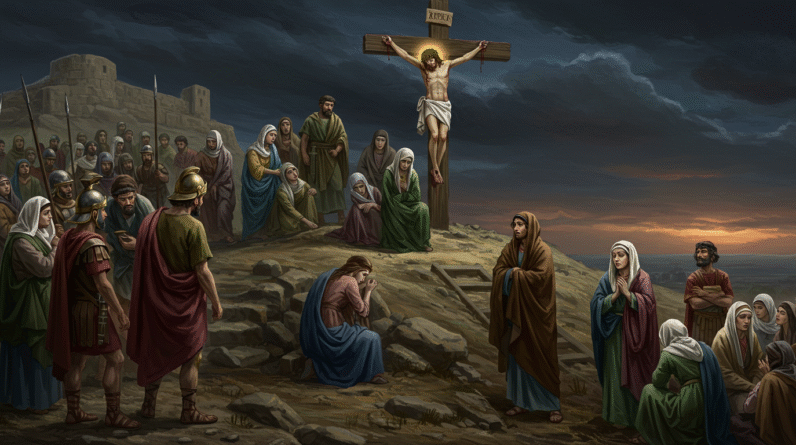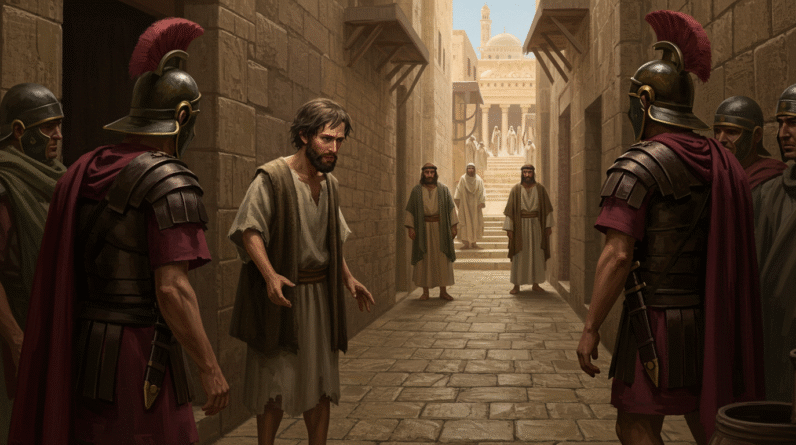Discover the depth of Maundy Thursday, where symbolism and introspection meet at the Last Supper. Explore its timeless impact in Matthew 26:17–30.
🍞 Maundy Thursday (The Last Supper – Matthew 26:17–30)
As you dive into the heart of the Christian faith, you find yourself drawn into the profound moments of Holy Week. One such moment is Maundy Thursday, the day that commemorates the Last Supper, a cornerstone event narrated in the New Testament. The intimate setting of this supper, described in Matthew 26:17-30, forms a tapestry of symbolism and meaning that has resonated with believers through the ages. Grab a cup of tea, find a comfortable spot, and let’s walk together through this fascinating part of the Bible.
The Significance of Maundy Thursday
Maundy Thursday, often overshadowed by the dramatic events of Good Friday and the triumphant joy of Easter Sunday, holds its unique place in the tapestry of Holy Week. It’s the day that sets the stage for the powerful moments that follow. Designed as a day of remembrance and reflection, it represents Jesus’s final meal with His disciples and the events that unfold around it.
It’s in this gathering that Jesus imparts some of His most profound teachings and actions. The word “Maundy” itself has roots in the Latin word “mandatum,” meaning “commandment,” reflecting the new commandment Jesus gave to His disciples—to love one another as He loved them. This instruction to love becomes more than a theme; it is the very life instruction of every follower of Jesus.
Preparations for the Passover
Before delving into the events of the Last Supper, consider the preparations that led to it. The disciples approached Jesus, asking where He wanted them to make preparations to eat the Passover meal. This was a critical moment, deeply embedded in Jewish tradition—a time of remembrance and celebration of God’s deliverance of the Israelites from slavery in Egypt. Jesus instructed them to look for a specific man in the city and tell him that the Teacher’s appointed time was near. In Matthew 26:19, we read, “So the disciples did as Jesus had directed them and prepared the Passover.” It’s a simple yet profound reminder of obedience and preparedness in the walk of faith.
The Atmosphere of the Upper Room
The Upper Room is a setting filled with anticipation, tension, and sacredness. Imagine yourself there among the disciples. The room, humble and unassuming, now holds a heightened sense of the holy. Perhaps you notice the flickering lanterns casting gentle shadows, the aroma of unleavened bread, and the murmurs of quiet conversations. Each disciple might have been lost in thoughts of what was to come, with Jesus at the center—a figure of calm amidst uncertainties. Here, in the Upper Room, Jesus begins the meal, aware that this would be His last with them before His death. It’s a moment of both introspection and revelation.
Jesus Washes the Disciples’ Feet
One might expect an atmosphere of formality and solemnity, yet Jesus surprises everyone with an act of humble service. Before they partake in the meal, He takes on the role of a servant and begins to wash the disciples’ feet. This action, captured in the Gospels, though not described in Matthew, sets an example of humility and servanthood. Here is the Son of God, kneeling to wash the feet of those who follow Him. What does this tell you about the heart of Jesus? It speaks volumes of His love and His call for you to serve one another, to love not just in words but in actions.
The Prediction of Betrayal
As the meal progresses, Jesus reveals that one among them will betray Him. This revelation sends tremors of disbelief and sorrow through the group, each disciple questioning, “Surely you don’t mean me, Lord?” (Matthew 26:22). The mere thought of betrayal from within deeply unsettled them, and rightly so.
Imagine the grasping realization that not all within the circle held pure intentions. Yet, Jesus’s demeanor remains somber, tinged with an understanding of human frailty. The conversation opens an avenue of reflection on the nature of loyalty and trust. It is a stark reminder of the complexities within each heart and the grace with which Jesus approaches our weaknesses.
The Institution of the Eucharist
One of the most enduring legacies of the Last Supper is the institution of the Eucharist, also known as Communion or the Lord’s Supper. In Matthew 26:26-28, it’s depicted with simplicity and profoundness: “While they were eating, Jesus took bread, and when he had given thanks, he broke it and gave it to his disciples, saying, ‘Take and eat; this is my body.’
Then he took a cup, and when he had given thanks, he gave it to them, saying, ‘Drink from it, all of you. This is my blood of the covenant, which is poured out for many for the forgiveness of sins.'” These words, familiar yet always fresh, encapsulate the mystery and majesty of God’s promise—representing Jesus’s body broken and His blood shed for the world. It’s an invitation into a deep relationship with Him, a continual remembrance of His love and sacrifice.

The New Covenant
Embedded within the ceremony of the Eucharist is a profound theological concept—the New Covenant. It’s a pivotal shift from the old ways, where the sacrificial system defined the relationship between God and His people. In this new promise, Jesus becomes the ultimate sacrifice. The breaking of bread and the sharing of the cup stand as symbols of this new relationship, one defined by grace, forgiveness, and love. It’s a moment that echoes throughout history, defining Christian worship and belief. As you ponder the meaning of the New Covenant, consider how it reshapes your understanding of faith and your relationship with God.
The Hymn and the Mount of Olives
After sharing in the meal and instituting the Eucharist, the night draws to a close with the singing of a hymn. Then, they make their way to the Mount of Olives. In Matthew 26:30 it reads, “When they had sung a hymn, they went out to the Mount of Olives.” The hymns sung were likely the Hallel Psalms (Psalms 113-118), filled with themes of gratitude and praise. As they step into the night, the path ahead remains shrouded in mystery and impending trial, yet Jesus and His disciples are enveloped in the familiarity and comfort of a song. It’s a moment to reflect on the power of worship and community, especially in times of uncertainty.
The Agony of Gethsemane
Following the Last Supper, the narrative moves to Gethsemane, where Jesus prays earnestly in the garden. Though these events continue beyond Matthew 26:30, they form an integral part of the Maundy Thursday meditation. Jesus’s agony and earnest prayer paint a picture of His human experience, detailing His struggle as He prepares for what is to come. The emotional depth and vulnerability displayed here provide insight into His full embrace of human suffering and the weight of obedience. It’s a scene that invites contemplation about the intersection of divine purpose and human emotion.
Conclusion
Maundy Thursday leaves an indelible mark on the hearts of believers. It’s a day rich with meaning, filled with elements of community, service, betrayal, and new beginnings. The Last Supper becomes more than a historical event; it transforms into an enduring invitation to walk in the footsteps of Jesus, embodying His teachings through service and love. As you reflect on this day and its significance, consider its implications in your life. How does this story influence your daily actions, your faith journey, and your understanding of love and sacrifice?
As a ClickBank Affiliate, I earn from qualifying purchases.
Acknowledgment: All Bible verses referenced in this article were accessed via Bible Gateway (or Bible Hub).
“Want to explore more? Check out our latest post on Why Jesus? and discover the life-changing truth of the Gospel!”




